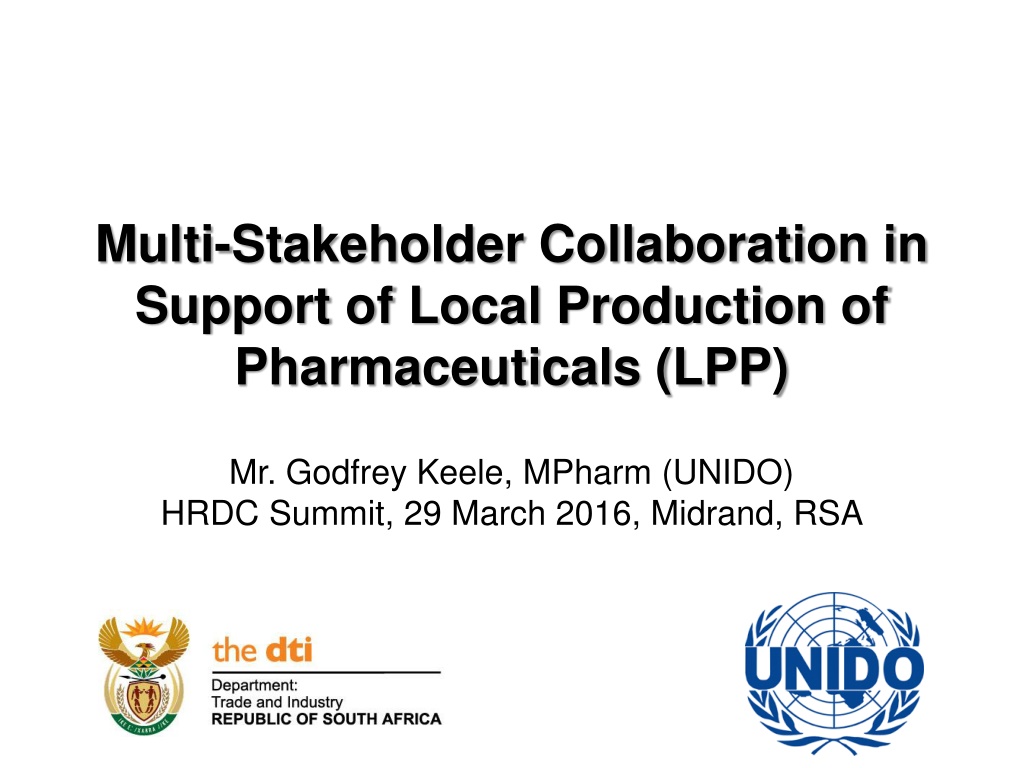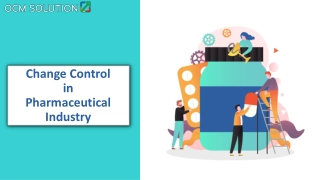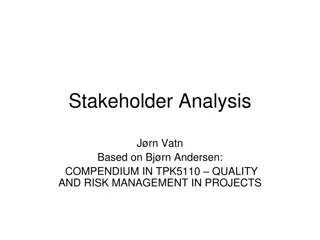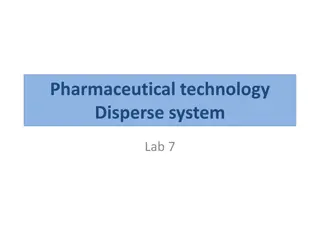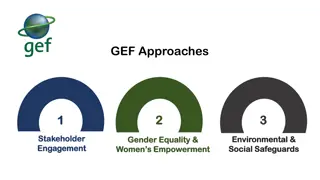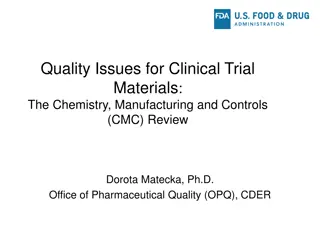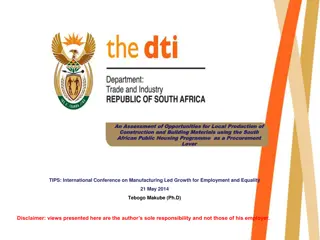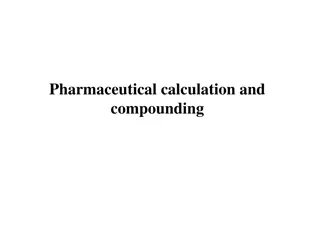Enhancing Local Pharmaceutical Production through Multi-Stakeholder Collaboration
The initiative centers on establishing a multi-stakeholder forum to drive the local production of pharmaceuticals in South Africa. With a vision for 2030 that includes a robust pharmaceutical industry, the intervention aims to address challenges like medicine stock outs, limited manufacturing capacity, and skilled professional shortages. Key strategies involve formulating a sector development strategy, implementing skills development programs, and ensuring a secure supply of essential medicines.
- Pharmaceutical production
- Multi-stakeholder collaboration
- Local industry development
- South Africa
- Healthcare strategy
Download Presentation

Please find below an Image/Link to download the presentation.
The content on the website is provided AS IS for your information and personal use only. It may not be sold, licensed, or shared on other websites without obtaining consent from the author. Download presentation by click this link. If you encounter any issues during the download, it is possible that the publisher has removed the file from their server.
E N D
Presentation Transcript
Multi-Stakeholder Collaboration in Support of Local Production of Pharmaceuticals (LPP) Mr. Godfrey Keele, MPharm (UNIDO) HRDC Summit, 29 March 2016, Midrand, RSA
Requested Intervention Vision 2030 for Pharma Healthy and productive nation Security of supply of essential medicines - NHI High rate of economic growth and job creation Thriving knowledge economy and R&D Local pharmaceutical industry that is globally competitive - FDI Key exporter of medicines esp to the African market The Deliverable A multi-stakeholder forum with a legal status. The forum should: o Formulate a sector development strategy to address the matters related to public health and trade innovation o Craft a demand driven and evidence based skills development programme o Report back quarterly +
Current Situation (March 2016) Key Challenges: o High incidence of medicine stock outs undermines our collective effort to improve the health of SAns o Limited expansion of pharmaceutical plants despite SA s triple burden of disease & incentives (dti) o Erosion of manufacturing capacity and job losses 37 plants closed down with 6,500 jobs being lost o Shortage of highly skilled professionals o Pharma is a 5th leading driver of trade deficit in SA o Only 35% of our pharmaceutical consumption is produced locally o Considerable threat to the security of supply of medicines in SA
Stakeholders Present at the Forum Statutory Authorities SETAs Associations Government PHARMISA UN Agency Academia Universities (X10)
Legislative Framework for LPP National Drug Policy Objectives o Improve access to drugs o Lower the cost of drugs o Promote LPP Medicines Act o Sect 22C(1)(b) licensing and quality standards (PIC/S) o Sect 22G transparent pricing system o Sect 22F mandatory generic substitution Industrial Policy Action Plan Manufacturing Investment Programme Manufacturing Competitiveness Enhancement Programme Special Economic Zones 12I Tax Incentive Allowance National Industrial Participation Programme
Policy Analysis of the BRICS Bloc Import Duty Price Controls Local Content Country PIC/S Yes Yes No Yes Yes Yes No Yes No Yes No Yes Yes Yes No Yes Yes Yes Yes No
Business Case for LPP Key Multipliers Impact on the Economy R1 invested in production = R 0.35 in Fiscal Revenue = R 1.13 in Value Created R1 M invested in production = 3 sustained jobs o Knowledge economy o Skills development o Job creation o Broader tax base Reference: Deloitte 2016
AUs Pharmaceutical Manufacturing Plan For Africa Business Plan Ethiopia concluded a Sector Strategy in 2015 Kenya concluded a GMP Roadmap in 2014
In the future, regional and global power and national stability will be determined not by who controls arms, but by who controls access to medicines Michel Sidibe (Executive Director of UNAIDS)
